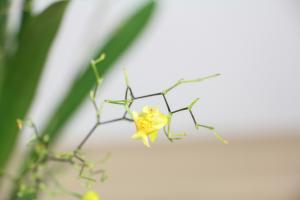How do Plants Release Water?
Plants are amazing organisms that have unique ways of adapting to their environment. Water is essential for plant growth and survival, and plants have evolved different ways of releasing water through a process known as transpiration. Transpiration involves the release of water vapor from plant leaves into the atmosphere. This article explores how plants release water and why it is important for their survival.
The Process of Transpiration
Transpiration is the main process by which plants release water. The process involves the absorption of water by plant roots from the soil. The water is then transported to the leaves through a specialized network of tubes called xylem. Once in the leaves, the water evaporates into the atmosphere through small pores on the leaf surface called stomata. The water that evaporates from the leaves is in the form of water vapor.
When the water vapor is released into the atmosphere, it creates a concentration gradient between the plant and the atmosphere. This gradient causes more water to move from the plant to the atmosphere through transpiration. In fact, transpiration accounts for about 90% of the water that is absorbed by plants.
The Role of Stomata in Transpiration
Stomata play a critical role in the process of transpiration. They are small pores on the leaf surface that regulate the exchange of gases such as carbon dioxide and oxygen, and the release of water vapor. The opening and closing of stomata are controlled by specialized cells called guard cells.
The opening and closing of stomata are influenced by environmental factors such as temperature, humidity, light intensity, and carbon dioxide levels. In response to changes in these factors, the guard cells adjust the size of the stomatal opening to regulate the release of water vapor. For example, when the air is dry, the stomatal opening is smaller to reduce water loss. Conversely, when the air is humid, the stomatal opening is larger to increase water loss.
The Importance of Transpiration for Plant Survival
Transpiration is essential for plant survival for several reasons. First, the process helps to transport water and nutrients from the roots to the leaves. Without transpiration, the plant would be unable to absorb sufficient quantities of water or nutrients from the soil, which would affect growth and survival.
Secondly, transpiration helps to regulate the temperature of the plant. When water is lost through transpiration, it cools the leaf surface. This is important for preventing heat damage to the plant.
Lastly, transpiration helps to maintain the structure of the plant. The loss of water through transpiration creates negative pressure in the xylem, which helps to keep the cells rigid and maintain the structure of the plant.
The Effects of Environmental Factors on Transpiration
Environmental factors such as temperature, humidity, light intensity, and carbon dioxide levels can affect the rate of transpiration in plants. For example, in hot and dry conditions, the rate of transpiration is higher, which can lead to excessive water loss and dehydration in the plant.
Similarly, in low light conditions, transpiration rates are lower as the plant reduces its water loss to conserve energy. In addition, high carbon dioxide levels can also reduce transpiration rates as plants do not need to open their stomata as wide to absorb carbon dioxide for photosynthesis.
Conclusion
Plants have evolved sophisticated mechanisms for releasing water through transpiration. The process helps to transport water and nutrients from the roots to the leaves, maintain the structure of the plant, and regulate its temperature. Environmental factors such as temperature, humidity, light intensity, and carbon dioxide levels can influence the rate of transpiration in plants. Understanding how plants release water is important for plant growth and survival, and for managing agricultural and natural ecosystems.

 how many times do yo...
how many times do yo... how many planted tre...
how many planted tre... how many pine trees ...
how many pine trees ... how many pecan trees...
how many pecan trees... how many plants comp...
how many plants comp... how many plants can ...
how many plants can ... how many plants and ...
how many plants and ... how many pepper plan...
how many pepper plan...































